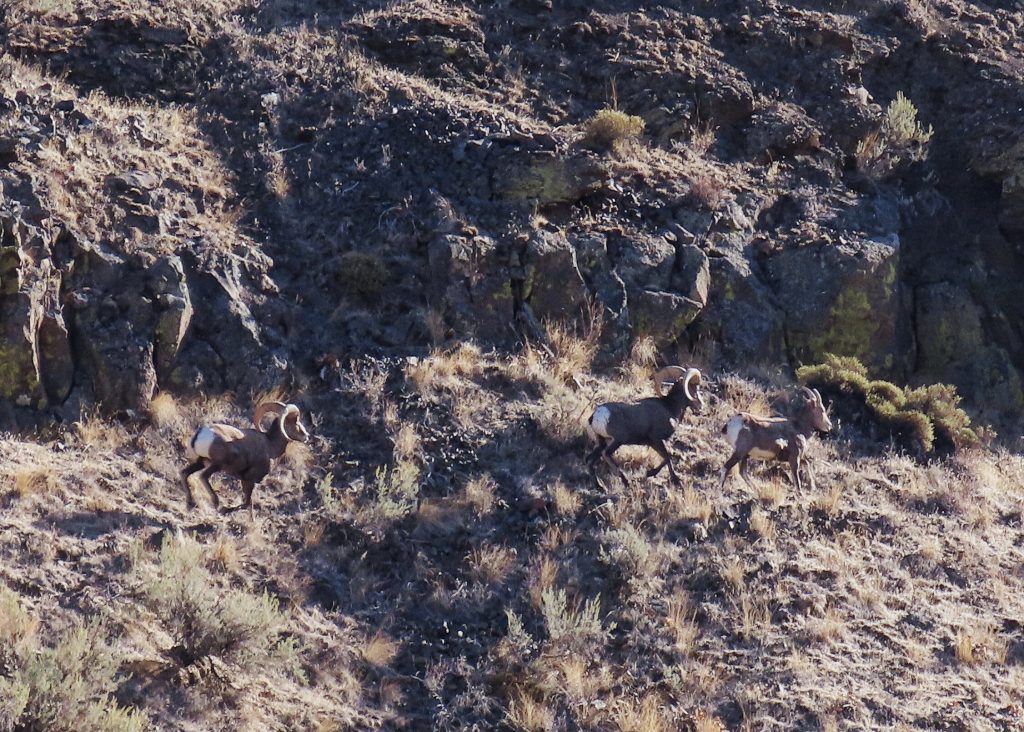
I have been looking for Desert Bighorn Sheep for a long time. Back in the mid 80s, when I spent winters rock climbing in Joshua Tree National Monument, I spent many an off day driving to likely locations, having heard that somebody had gotten a look at a ram out by Indian Chief or had seen a small herd near Keys View, and spending the day hiking in search of them. But it was all to no avail.
Many years later I saw on Oregon Field Guide that they’d been reintroduced at Hart Mtn. in se Oregon, and I’ve since made 2 trips to the (misnamed) National Antelope Refuge there (we do not have antelope on this continent; they are pronghorns, and are in a different family) trying to see one. While I have seen much interesting flora and fauna there, including many pronghorns, I have not seen any Desert Bighorns.
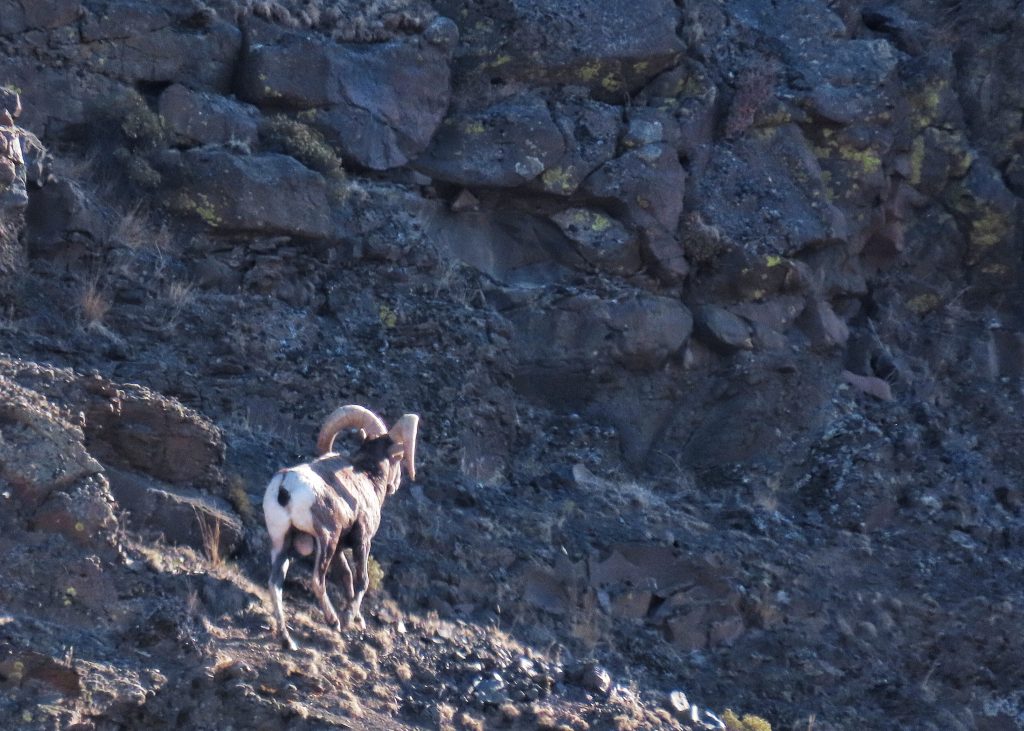
I did see a pair at Oak Creek Wildlife Area, along the Tieton River in Yakima County, Washington, but they were feeding like domestic animals on the hay that the Washington Department of Fish and Wildlife distributes to keep the local elk from marauding through farmer’s fields in the wintertime. And, while it was the highlight of the trip home from visiting Morgan at Central Washington University in Ellensburg, it still felt kind of cheap, and subsequent trips to Oak Creek produced neither hide nor hair of these animals.
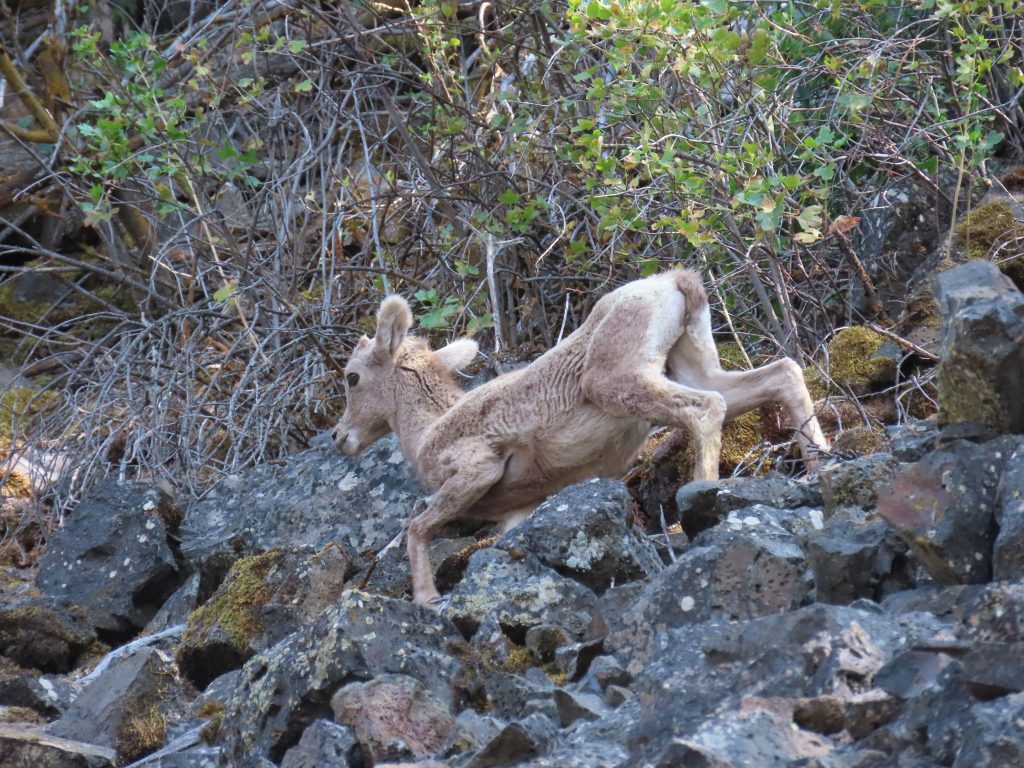
My first good sighting of one came in July, 2019, in the Yakima River Canyon. In my excitement I slammed on my brakes and almost got rear ended by an enraged semi-truck driver. Pulling my head out I continued down to a marginal pullout, grabbed my camera, and ran back up the road on the shoulder. I was mildly disappointed when I realized it was just a lamb, but that didn’t stop me from taking dozens of photos in between fruitlessly scanning the slopes for adults.
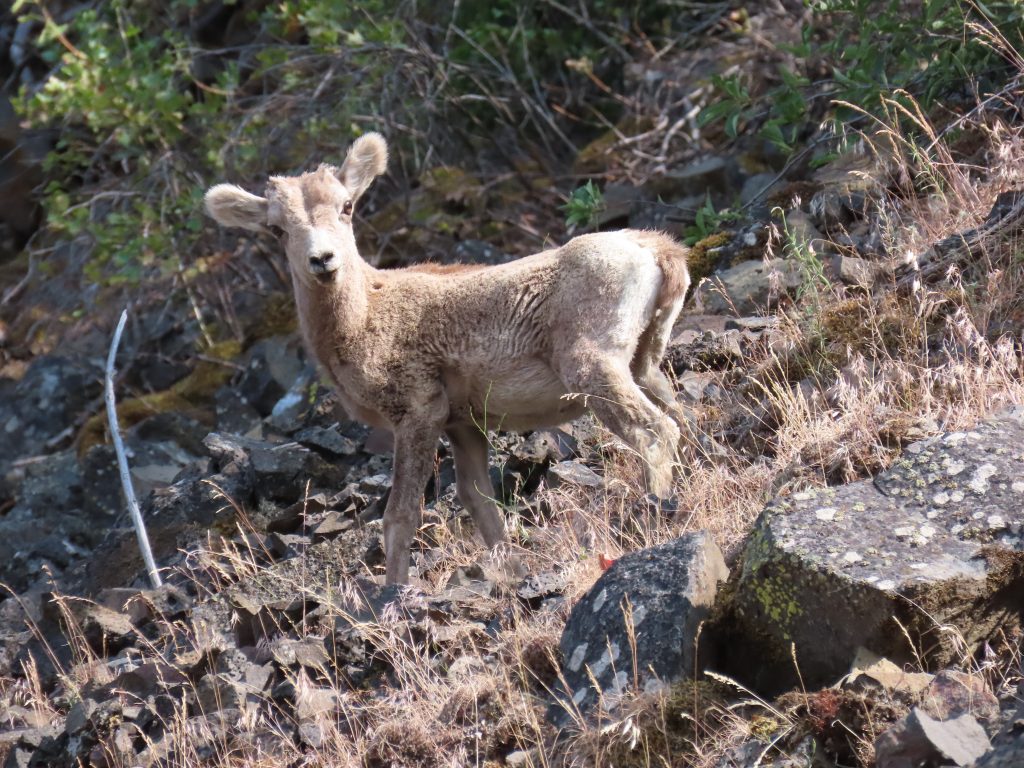
So, when I heard (Thanks Paul Slichter!) that the Desert Bighorns were rutting at Cottonwood Canyon State Park along the John Day River outside of Wasco, Oregon, I resolved to make the trip, even though these kinds of species specific expeditions seldom seem to work out for me. But I figured that, even if I didn’t see the target species, I’d still find cool stuff, and Pam and I would have a great road trip.
I really couldn’t have hoped for any better weather for November 1st, cloudless blue skies and already 50 when we left Vancouver at mid morning. There were whitecaps on the Columbia River, but once we were past The Dalles the wind abated significantly. When we reached the John Day at noon it was 55 with just a breath of a breeze. After a quick lunch we hit the trail.
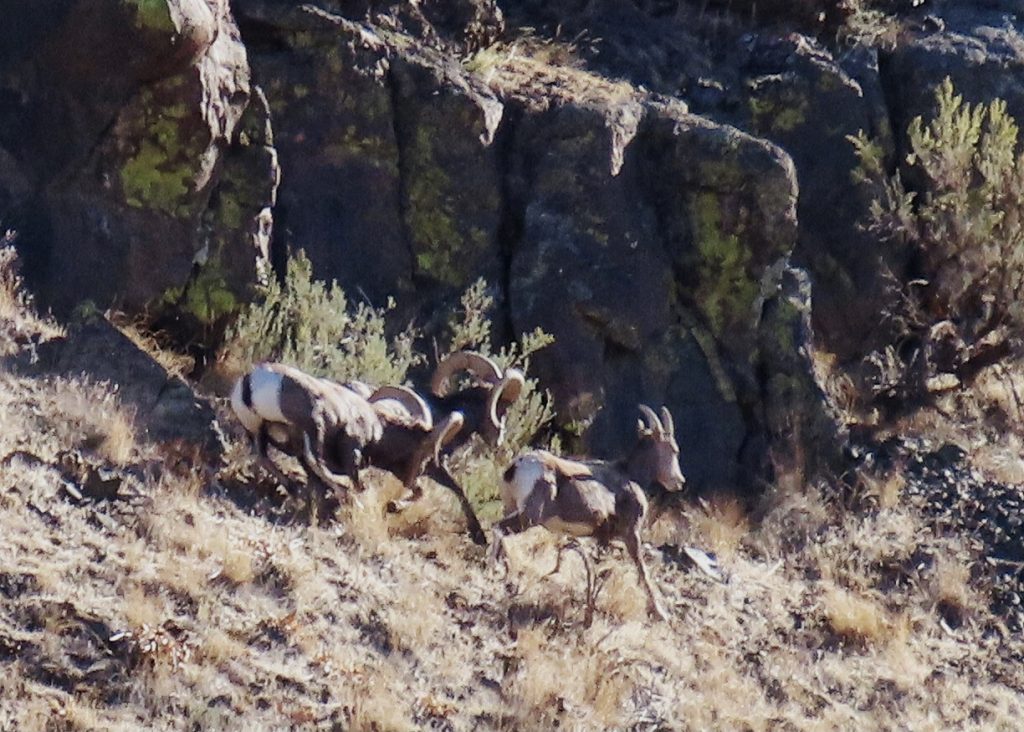
It was such a mild day, in such an interesting place, with such great company, that I quickly realized it didn’t matter if we didn’t see sheep. Not that I wasn’t still scanning for them, but I was looking just as hard for late season butterflies nectaring on the remaining rabbitbrush flowers, and any other arthropods I might find. And I was just happy to be in the middle of all that space and sunshine and sweet clean air. And then I heard the clattering of rocks.
It was so loud I scanned the area between us and the river first. But, finding nothing there, I visually swept the river bank, then the opposite bank and up the slopes to the cliffs, where I spotted, at least 300 yards away (in fact it turned out to be in another county, since the John Day River is the border between Sherman and Gilliam Counties), the four bounding white dots of sheep rumps racing along a steeply angled bench between vertical rock faces. I fumbled the camera up to my eyes and finally found three rams chasing a ewe. As I watched them run I realized that the clatter had been so loud because they were dislodging stones, some of them the size of basketballs, which were cascading down the cliffs across the river from me. I was so excited that it took several snaps before I realized I wasn’t at max telephoto. The angle of the sun was bad, they were moving very fast through patches of shade, and I was breathing silent prayers that at least some of these shots would be decent.
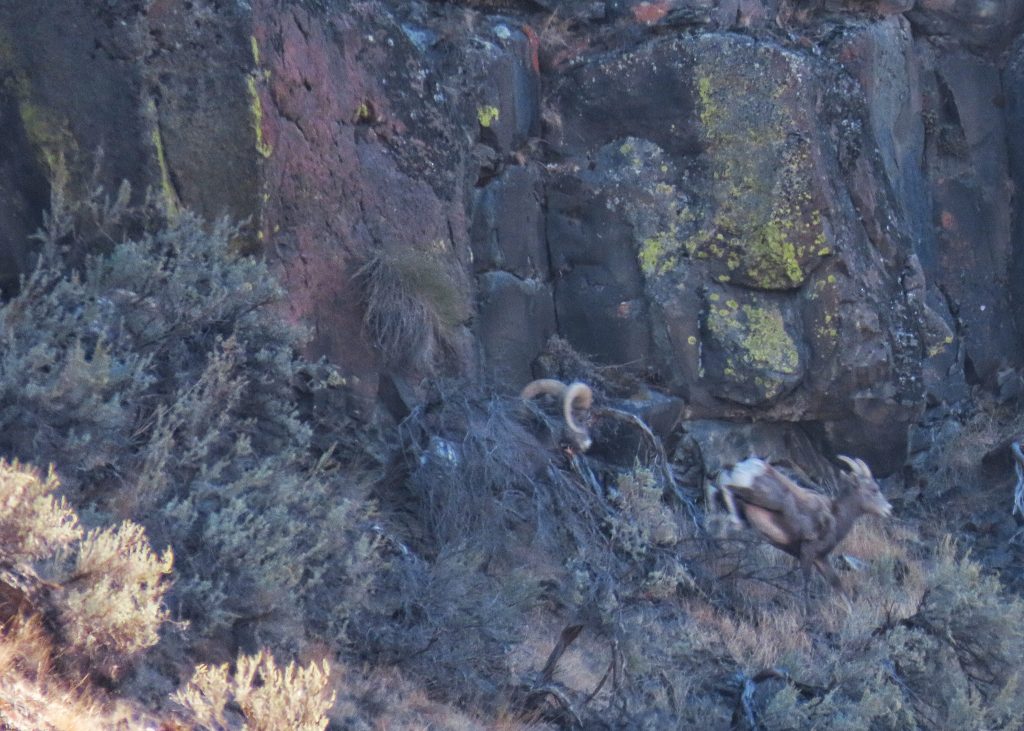
The ewe was leading the pack, and running like her life depended on it. One of the rams gave up and I focused on him. I anthropomorphized that he looked dejectedly at the fleeing sheep. When I relocated the others they were straight into the sun and so glared I could barely make them out. And then they were gone. But I was very happy, and turned and did a double fist bump with my beaming wife. And a few of the dozens of snaps did turn out decent, although National Geographic probably wouldn’t think so.
Now that I know they are there, and since it is still early in the mating season, I’ll probably go back soon, since I’m still hoping to see that spectacular display of masculinity run amok wherein they get a running start and a full head of steam and headbutt one another with a force that would kill most animals, although I would certainly settle for seeing them get rump to rump and try to back kick each other’s testicles off. Glad we humans have evolved slightly past that!
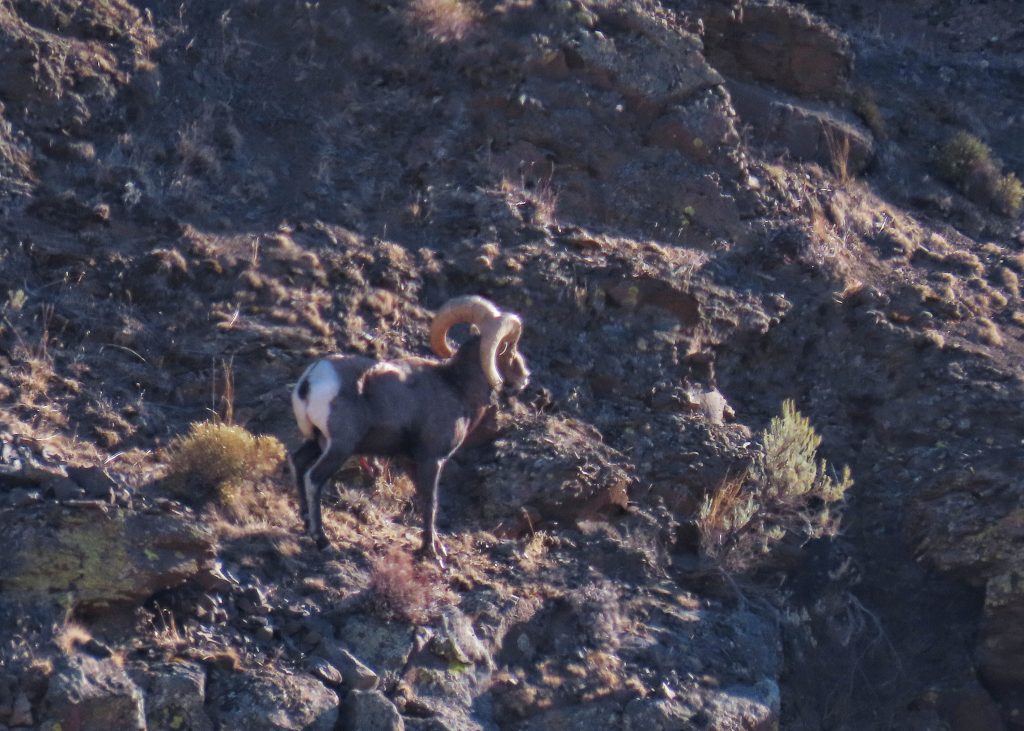
Description– Up to 40” tall at the shoulder. Rams can weigh up to 250 lbs, with ewes topping out about 175 lbs. Rocky Mtn Bighorns tend to be bigger overall. Both males and females have horns (female horns do not develop a curl), which they do not shed, and that keep growing their whole life. Desert Bighorns vary in color from a dark tan to reddish or grayish brown. They have white rumps and underbellies, and white behind the nostrils. The tail is short, thin, and black.
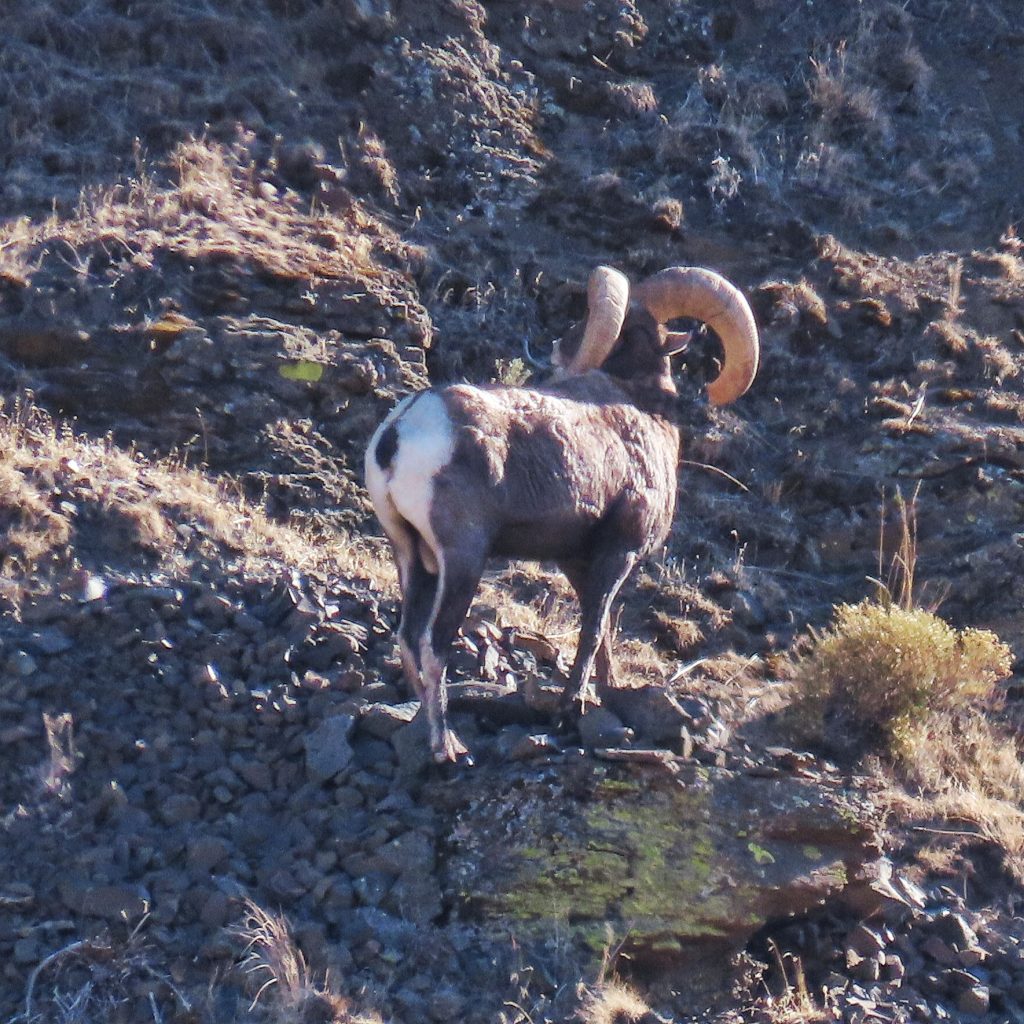
Similar species– in our region there are no similar species. Dall’s Sheep range southward to central British Columbia, but they don’t enter our region. There are, however, other subspecies of Ovis canadensis. There has been a lot of debate over the years, and at one time there were 7 subspecies. But molecular analysis has narrowed it down to just 3; O. c. canadensis (Rocky Mountain Bighorn Sheep) which inhabit the Rockies and montane areas like the Selkirks, Blues, and Wallowas (but not the Cascades); O. c. sierrae (Sierra Nevada Bighorn Sheep), endemic to the Sierras and endangered; and O. c. nelsoni (Desert Bighorn Sheep). Very difficult to tell them apart visually, but easily differentiated by habitat. Sierras are only in the Sierras, and Rocky Mtn. Bighorns are only in the mountains, where you will not find Desert Bighorns. Only Desert Bighorns are adapted to the heat, drought, and coarseness of diet they encounter in their desert habitat, a fact that doomed many of the first attempts to reintroduce bighorns to desert habitat, since they used Rocky Mtn. stock.
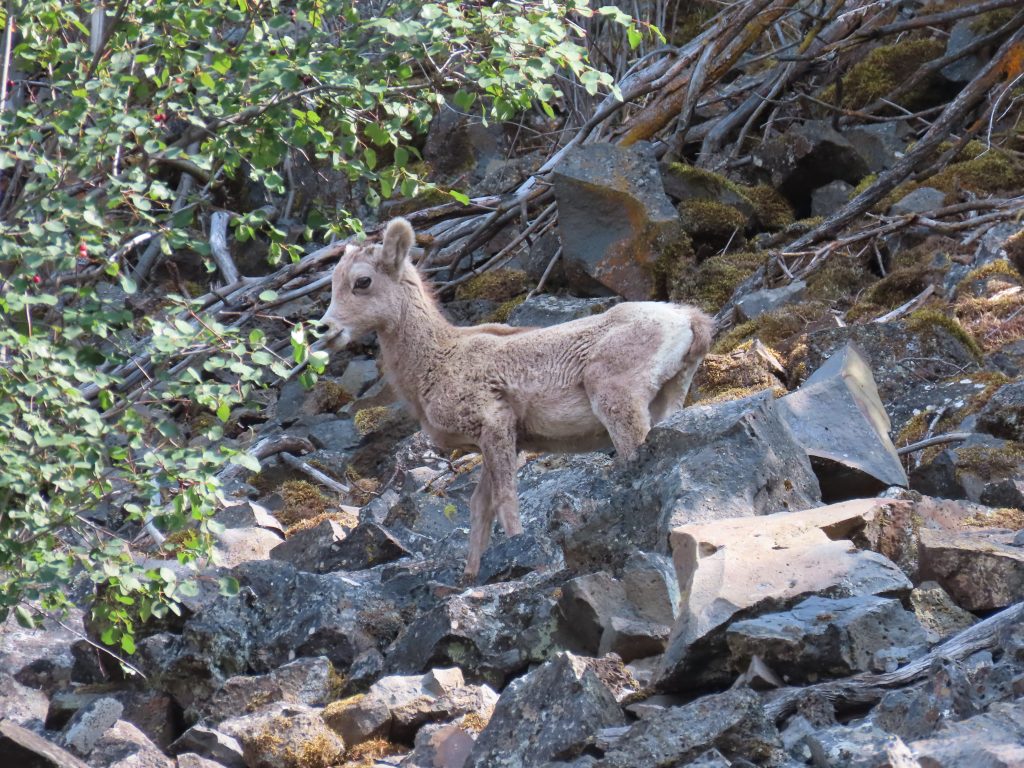
Habitat– Arid lands canyons and rocky slopes with access to grasses, sedges, and forbs.
Range– Historically they ranged over most of the lava plateau of eastern Washington and Oregon, and southern Idaho. But most of those populations were extirpated because of overgrazing by, and diseases from, domestic sheep, as well as over hunting.Now, mostly due to reintroduction, they can be found at several wildlife areas in eastern Washington, including Oak Creek, Colockum, Sinahekin, and Swakane Canyon, as well as in Hells Canyon. In eastern Oregon they are found in several scattered locations, including the Deschutes and John Day River canyons, and at Steens and Hart Mtns. in se Oregon. Most of Idaho’s Ovis canadensis nelsoni can be found in the Owyhee Desert of sw Idaho.
Eats-Mostly grasses and sedges when available, but also browses forbs.
Eaten by– Lambs are preyed upon by bears, coyotes, wolves, cougars, and Golden Eagles. Adults are seldom taken by anything except cougars and wolves.
Adults active– The rut is usually around November, and adults are less crepuscular then.
Etymology of names– Ovis is Latin for sheep. The epithet canadensis refers to the fact that the type specimens were found at elevation in the north. Nelsoni is a tribute to the noted naturalist Edward W. Nelson (1855-1934).
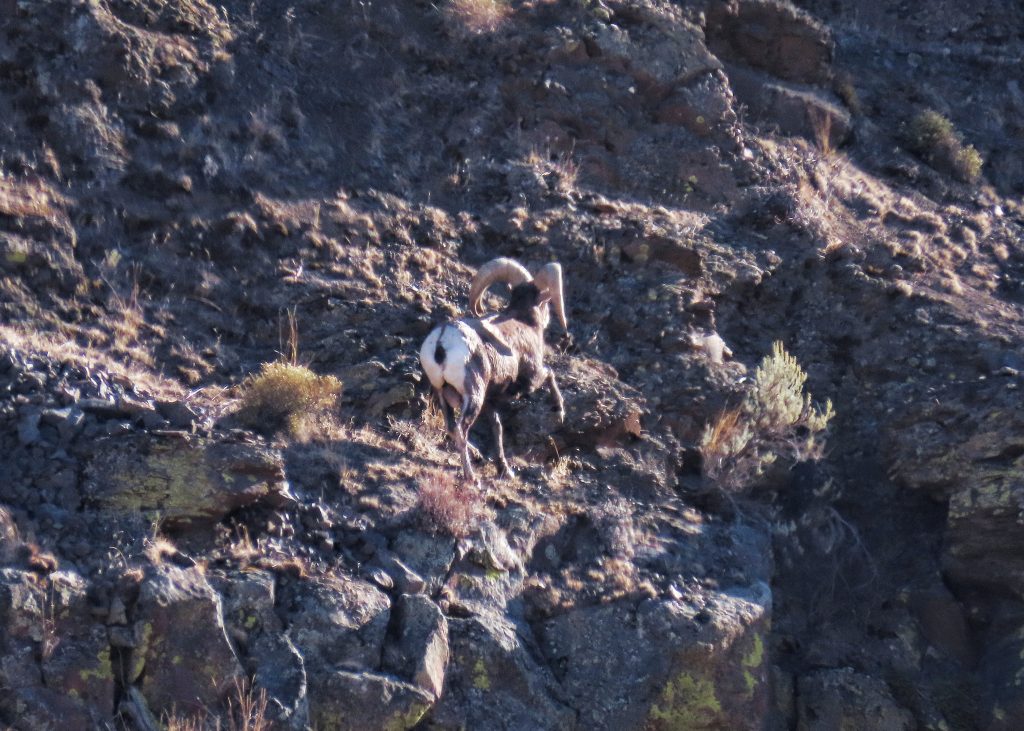
http://naturemappingfoundation.org/natmap/facts/bighorn_sheep_712.html
https://en.m.wikipedia.org/wiki/Desert_bighorn_sheep
https://wildlife.ca.gov/Conservation/Mammals/Bighorn-Sheep/Desert
https://www.eduscapes.com/nature/bighorn/index1.htm
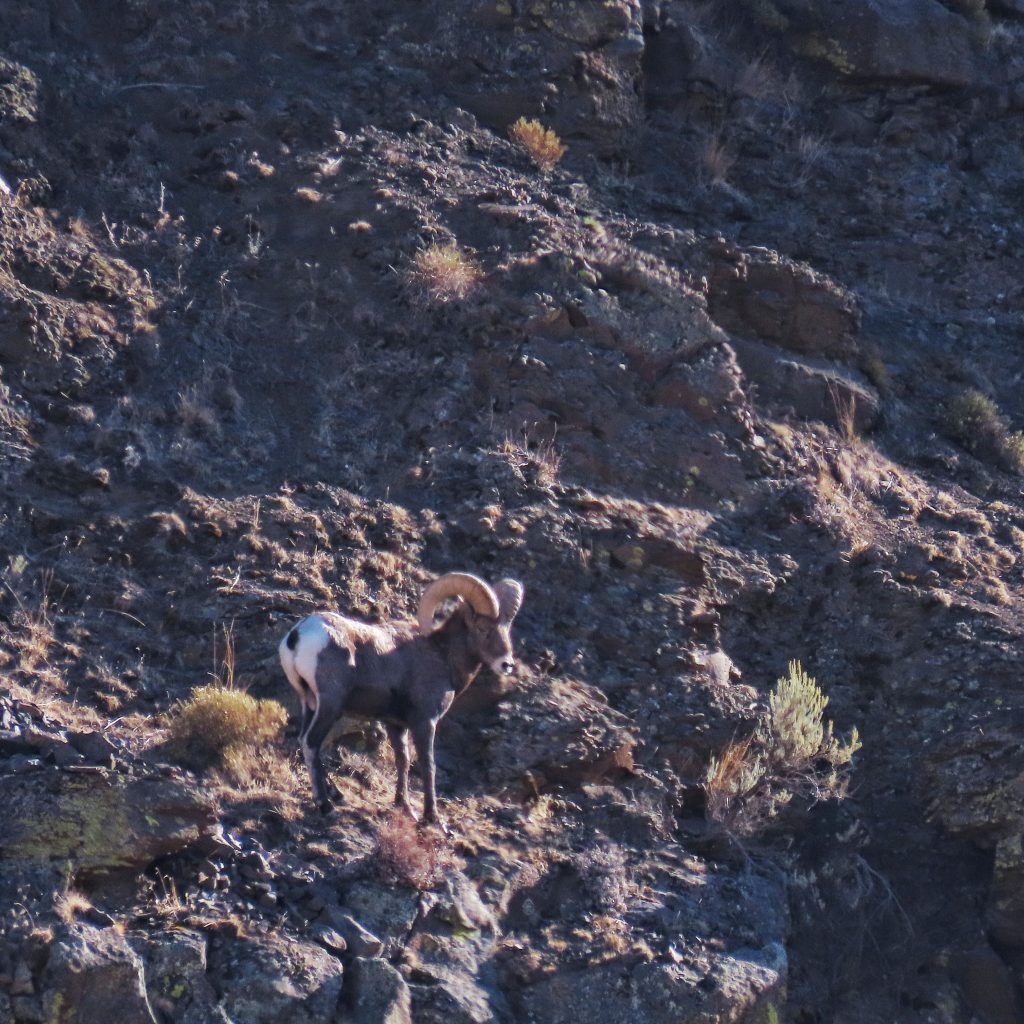
Excellent description of an amazing day! 🤩
Interesting story! And you’re right – we humans have managed to evolve ‘slightly’ beyond that.
The two places we’ve reliably found them is at
~ Anza Borrego – the Palm Canyon hike there has a stream running down it that they come to drink at.
~ Boulder City near Lake Mead. We saw them while hiking up Black Mountain just north of the town. But they are almost too tame – you can find videos online of them wandering through the town parks!